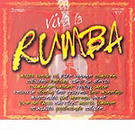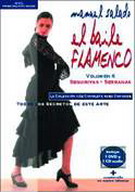A flamenco palo coming from the city of Ronda, in Malaga. As the rest of flamenco palos coming from Malaga, the Rondeña is prior to the current flamenco.
It's a copla with four octosyllable lines, generally with a consonant rhyme. With or without repetition of the second line.
It's a composition without compas, the lyrics talk about the rural life. Now it's slower than before.
Rondeña
Rumba
Rumbas, they belong to the Latin American branch, to the tangos group and the measure is binary. "Aflamencado" songs belonging to the songs of "Ida y Vuelta". A musical rhythm like a dance style coming from Africa, through the slave trade to Cuba. The rumba arrived in Spain with the flamenca rumba and the Catalonian rumba. Connected to the "guaracha" more than with the Cuban rumba.
Three different "tumbadoras":
El Guaguancó, (La Habana)
La Columbia, (Matanzas)
El Yambú. (Matanzas)
Saeta
The Saeta is a type of Spanish religious song dating back many centuries. The Saeta antigua [old Saeta] probably arose from the recitation of psalms under the influence of liturgical music."Saetas vary greatly in form and style, ranging from simple syllabic melodies to highly ornamented ones."Since the nineteenth century, however, the most favored Saetas have incorporated distinct elements associated with Flamenco music, particularly the siguiriyas.
The Saeta is best known for its mournful power during Holy Week,when by Catholic tradition the song is performed during the processions by religious confraternities that move through the streets of cities and towns in southern Spain.
Salia
Begining of a song.
Salida
This is the primitive element: the "quejio", the groan. Also called "escobilla" or "desplante".
Sangre Gitana
Executed with guitar, bandurrias and castanets accompaniment.
Seguiriya
Siguiriyas (also seguiriyas, seguidilla gitana or playera) is a form of flamenco music belonging to the cante jondo category. Its deep, expressive style is among the most important in flamenco. The siguiriyas are normally played in the key of A Phrygian with each measure (or compás) consisting of 12 counts with emphasis on the 1st, 3rd, 5th, 8th and 11th beats as shown here: [1] 2 [3] 4 [5] 6 7 [8] 9 10 [11] 12
This rhythm can be contrasted to the rhythmic pattern of the soleares, which also has 12 beats, but the accents fall differently. Taking the unusual accenting into account, it can technically be seen as a measure of 3/4 (counted in eight notes) starting on "2", then a measure of 6/8 followed by the "1 and" of the 3/4. Every note is evenly spaced apart. For example: [2] and [3] and [1] 2 3 [4] 5 6 [1] and
However, this presents difficulties in counting and is counted more simply in 5 beats, with three "short" and two "long" beats: [1] and [2] and [3] and uh [4] and uh [5] and
In this case, the 1, 2, and 5 are the short beats and the 3 and 4 are long beats.
Serranas/Serrana
From the group of the seguiriyas, the Serrana is a rural song all over Andalusia. Also very present in the vineyards of Jerez.
Then the serrana jumped to the cities and found support in the guitar.
Sevillana
Sevillanas is a type of folk music, sung and written in Seville (Andalusia) in Spain. Historically, they are a derivative of Castilian folk music (seguirilla). Technically, they are an evolution from Castilian seguidillas, they have a relatively limited musical pattern, but rich lyrics, based on country side life, virgins, towns, neighborhoods, pilgrimage and, of course, love themes. They are sung by a plethora of local groups, like Los Romeros de la Puebla, Los Amigos de Gines, Las Corraleras de Lebrija, Cantores de Hispalis, and Los del Río. Every year, dozens of new sevillanas discs are published.
Sevillanas can be heard in southern Spain, mainly, in fairs and festivals, including the famous Seville Fair, La Feria de Sevilla. There is an associated dance for the music: "Baile por sevillanas", consisting of four different parts. One can find schools teaching "baile por sevillanas" in nearly every town in Spain.
Generally speaking, sevillanas are very light and happy music.
Sevillana is a popular flamenco-style dance from Seville. Its rhythm is 3/4 or better 6/8.
The Sevillana did not originate in Seville. It is an old folk dance, danced by couples of all ages and sexes during celebrations (fiestas or ferias), often by whole families and 'pueblos'. Sevillanas choreography is very stable, and knowing it is very useful, since it is a fiesta dance. This is why learning flamenco usually starts with this particular dance: it is easier to reach a particular level and there are more occasions for practice and training (even for men).
Each sevillana is composed of 4 parts, with each part divided into 3 'coplas', and with each copla made up of 6 movements. It is a very vivid dance, often excluded from flamenco by "purists". Paradoxically, during spectacles and shows it is usually Sevillana dancing that ordinary people (not born in Andalusia) take for 'the real, true flamenco', as it is full of turns.
Sevillanas Corraleras
Sevillanas is a type of folk music, sung and written in Seville (Andalusia) in Spain. Historically, they are a derivative of Castilian folk music (seguirilla). Among the ancient sevillanas the most popular are named the sevillanas corraleras. Born in neighborhoods like Triana, la Macarena, ,San Bernardo, La Feria and la Alameda. Technically, they are an evolution from Castilian seguidillas, they have a relatively limited musical pattern, but rich lyrics, based on country side life, virgins, towns, neighborhoods, pilgrimage and, of course, love themes.



